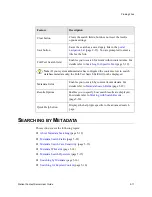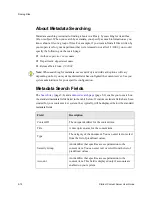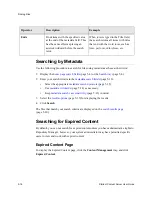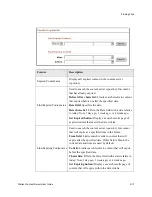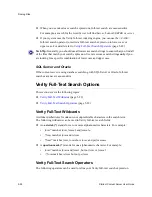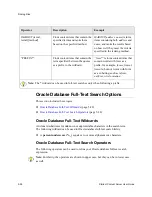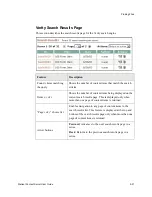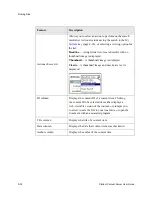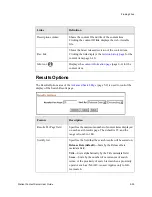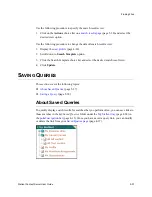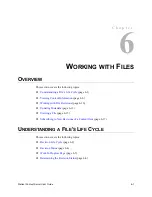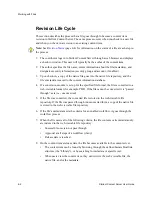
Stellent Content Server User Guide
5-25
Finding Files
full-text indexed, there is no word boundary (such as a space) just after the opening tag or
just before the closing tag. Therefore, the words at the beginning and end of each XML
element do not get indexed as separate words.
For example, if the title of your document is “New Symbols and Functions,” the XML
might look like this:
<Title>New Symbols and Functions</Title>
When this file is indexed, only the words “symbols” and “and” will be included as
separate words in the full-text index. If you enter “new” or “functions” in a full-text search
field, this file will not be included in the search results. However, you can use
(page 5-25) to find all occurrences of a word. For example, searching
for
*new*
or
*function*
would return the document.
Tamino Full-Text Wildcards
A wildcard substitutes for unknown or unpredictable characters in the search term.
The following wildcard can be used in Tamino full-text search fields:
❖
An asterisk (*) stands for zero or more alphanumeric characters. For example:
•
form* matches form, formal, and formula
•
*form matches form and reform
•
*form* matches form, formula, reform, and performance
Tamino Full-Text Search Operators
The following operators can be used to refine your Tamino full-text search expression.
Important: Tamino does not full-text index files that are in non-XML format. If a
native file is not in XML format and it is not converted to XML, it will not be included
in full-text search results.
Important: When using Tamino to search for text, you must place all full-text search
operators in angle brackets (< >).
Note: For clarity, the operators are shown in upper case, but they can be in lower case
as well.
Summary of Contents for Content Server
Page 1: ...Content Server User Guide SCS EN1 710...
Page 112: ......
Page 188: ......
Page 198: ......

